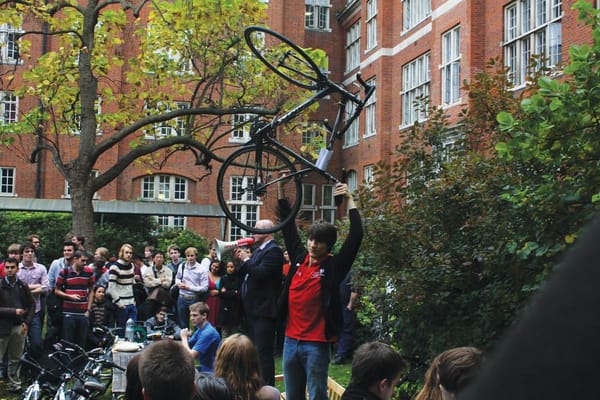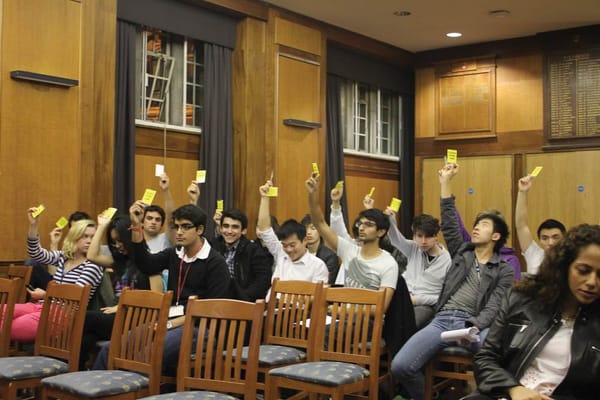European success for Imperial at iGEM
AuxIn and Gene Guard bring huge success to Imperial team
The iGEM (international Genetically Engineered Machine) competition is run every year with hundreds of teams from all over the world competing for the top prize in synthetic biology – a shiny piece of glass. It is now in its eighth year running and bigger than ever before, with the grand finale at MIT now preceded by three regionals in Europe, Asia and America. The objective of the competition is to essentially engineer bacteria to do something awesome – find land mines, produce fiery luminescence, you name it.
We were but lowly undergraduates when we signed up to be part of this year’s Imperial iGEM team but can now easily be identified by a lack of personal grooming usually observed exclusively in the late stages of PhD thesis writing, and if you are unfortunate enough to catch one of us in a bar you will likely be subjected to a rant about Gibson assembly (it never works, man) or BioBrick standards (it’s pointless, man). But I digress.
Our team of biologists, biochemists and bioengineers started out enthusiastically (and maybe a tiny bit naively) in early July, when we brainstormed for ideas on how to engineer microbes to do something awesome. After two weeks of coming up with concepts that ranged from feasible to completely wacky, we finally found the project of our dreams: AuxIn. Named after the phytohormone auxin, the project does what the title says: we engineered E. coli to produce indole 3-acetic acid, a type of auxin that enhances plant root growth. We were interested in expressing this hormone as it makes plants grow highly branched roots that can be used for holding down top soil in areas prone to soil erosion and desertification.
Once we had settled on a project, we jumped straight into the “human practices” component of our idea. We talked to ecologists, plant scientists, social scientists from LSE, charity founders and a Greenpeace scientific advisor to make sure that our project was viable and could be implemented in a sensible way. This led us to design Gene Guard, a containment device that prevents horizontal gene transfer (bacteria passing on DNA in the envrionment). We also looked at how we could implement our project in a culturally sensitive and responsible way and designed a concept of using a seed coat to cover seeds in our bacteria, which could then be shipped to countries such as Australia and India where soil erosion poses a big problem.
The project was completed with a third module, which enables bacteria to swim towards the root exudate malate to ensure that the compound reaches roots. Amazingly, we also found a paper published last year describing how plants are able to break down their own cell walls and eat bacteria – a great platform for modifying plants without directly engineering them.
And then we started living in a lab on SAF’s 5th floor. Communist attitudes towards sharing lab space quickly morphed into imperialist conquests for working pipettes. Tempers flared, friendships were tested. However, by the end of the summer, we came out exhausted but happy. Our bacteria produced auxin that could be seen to affect plants; they swam towards malate and were taken up into the roots and our Gene Guard module was only a week away from completion. On top of that, our engineers had done some amazing modelling and designed an entire website from scratch. We had also presented our project at the Natural History Museum and set up a radio show around iGEM, which we are told other people listen to.
Full of good hopes, we boarded a plane to Amsterdam on the first weekend of term. With iron determination we ignored the temptation of illicit substances and spent our time in the hotel room running over our vital, final 20-minute presentation. Nervosity ran high but we had our Disney movie moment when we were announced as finalists and Chris and Nikki got up to deliver the most amazing speech of their lives.
This experience could only be topped by what followed soon – the Imperial iGEM team was crowned Grand Prize winner in the first ever regional jamborree.
Happy and tired, we flew back to London and took a few days of deserved rest.
But the journey is not yet over. Soon we will be flying out to Boston to present our project again, this time competing against the top teams from Europe, Asia and America. We will continue to work on our project until then and hopefully find a great end to an amazing summer.









